The magnificent stature, sculptural branching and sensual, deep cinnamon bark of Parry manzanita (
Arctostaphylos manzanita) make a bold architectural statement. The smooth, dark red bark and sinuous branching are its most distinctive characteristics, yet the urn-shaped flowers — appearing in late winter to early spring — are an important nectar source for resident and migrating hummingbirds. Parry manzanita also provides nectar and subsequent apple-like berries to native bees, honeybees, large butterflies, birds and mammals. All this adds up to an appealing and strong specimen or focal tree in any low-water garden.
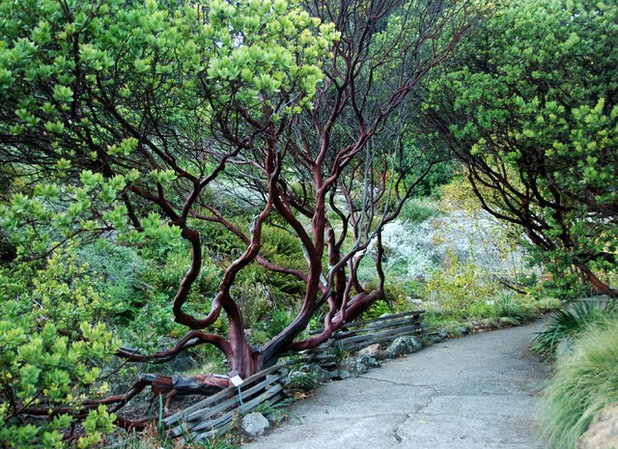
Pete Veilleux, East Bay Wilds
Botanical name: Arctostaphylos manzanita Common names: Parry manzanita, common manzanita
Origin: Grasslands, woodlands, chaparrals, forests of the southern Outer North Coast Range, Inner North Coast Range, Cascade Range Foothills, north and central foothills of Sierra Nevada, San Francisco Bay
Where it will grow: Hardy to 10 degrees Fahrenheit (USDA zones 8 to 10; find your zone)
Water requirement: Drought tolerant to occasional; needs adequate water when new growth is still tender
Light requirement: Full to partial sun
Soil requirement: Well-drained, acid to neutral
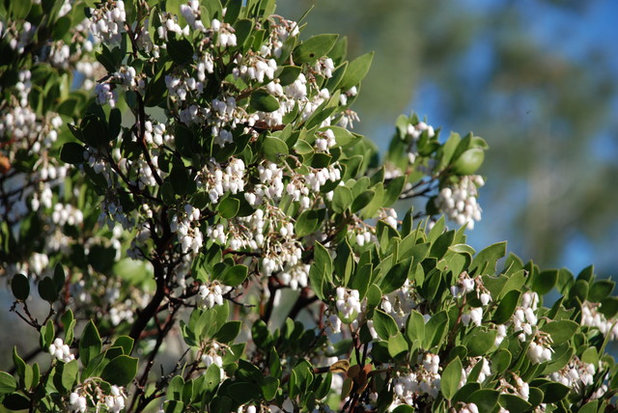
Pete Veilleux, East Bay Wilds
Mature size: Reliably 10 to 12 feet tall and wide; can reach 25 feet tall and 18 feet wide
Benefits and tolerances: Tolerates richer, heavier soils and summer irrigation; adaptable to many soils, including clay; moderately deer resistant
Seasonal interest: Urn-shaped flowers in late winter to early spring; smooth, dark red bark that peels seasonally; tiny apple-like berries in summer to fall (best left to wildlife or used for delicious manzanita cider)
When to plant: Fall to spring is ideal
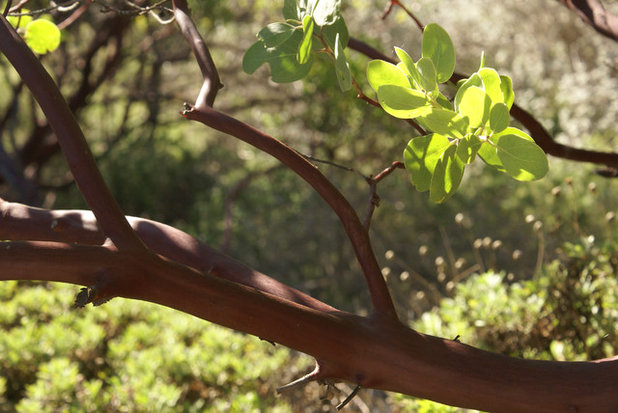
Debbie Ballentine
Distinguishing traits. It’s a large evergreen shrub or tree with sinuous branches, architectural structure, sculptural branches, urn-shaped flowers from winter to spring and apple-like berries from summer to fall. The foliage color of Parry manzanita varies from whitish to blue-green, olive-green and dark green. Horticultural cultivars have more reliable color, form and tolerance to garden conditions, due to their “cloned” propagation by cuttings.
Wildlife value. Pollinators, large butterflies and hummingbirds enjoy the flower nectar from late winter to early spring when little else is blooming. Birds and mammals eat the seed-berries in fall. The plant provides wonderful cover for wildlife.
How to use it. Due to its large mature size, Parry manzanita is best used as a single specimen except in the largest of gardens. It makes a great specimen or focal tree in a garden with a natural or rugged sensibility. It can also be used as a large screen or hedge, but prune it only during the dry summer months.
Parry manzanita does better than most manzanitas at tolerating summer irrigation and rich, heavy soils. Select a hillside or rocky location with excellent drainage, full to partial sun and little or no irrigation in the summer, and your manzanita with thank you by providing lovely evergreen foliage, delightful flowers, edible berries and charming wildlife.
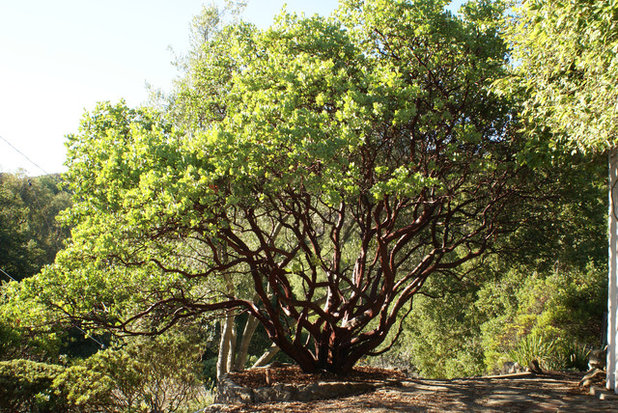
Debbie Ballentine
Other species, cultivars and hybrids:- Arctostaphylos manzanita ‘Dr. Hurd’: A highly prized selection, Dr. Hurd, shown here, is adaptable and fast growing. It typically reaches about 15 feet tall and wide, with an upright, open form that shows off its lovely branches. Large white flower clusters appear from January to March.
- A. manzanita ‘Byrd Hill’: In favorable conditions Byrd Hill will reach 15 to 25 feet tall. Collected in Sonoma County, California, this manzanita has thick gray-green leaves and white to pale pink flowers. It looks best when pruned to open up its beautiful branches.
- A. manzanita ‘Saint Helena’: From Mount St. Helena in Napa County, California, this species grows into a small tree, with grayish leaves that contrast with the red bark. White bell-shaped flowers appear in late winter. This selection is very disease resistant.
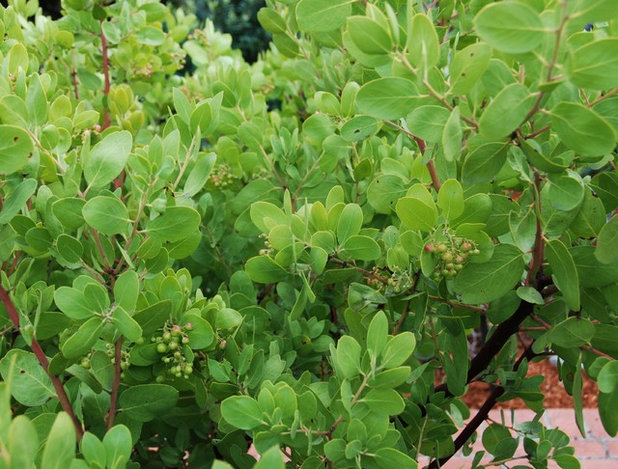
Pete Veilleux, East Bay Wilds
Shown: Green berries beginning to ripen to dark red
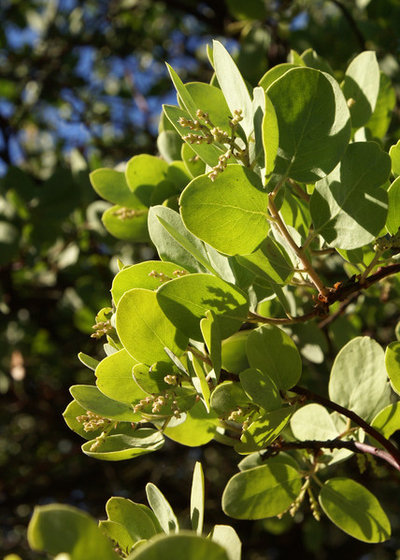
Debbie Ballentine
Planting notes:- Parry manzanita does best in gardens away from the coast and doesn’t tolerate desert or high-mountain conditions.
- Plant it where it won’t get summer irrigation once it’s established, except for a monthly deep watering.
- Prune manzanitas only in the dry summer months. They can be afflicted with a fungal pathogen, Botryosphaeria dothidea, if pruned in the moist winter or spring.
Shown: Olive-gray-green foliage and nascent buds of Dr. Hurd manzanita
More:10 Top California Native Plants, Trees and Grasses
Browse plants native to more regions of the U.S.





